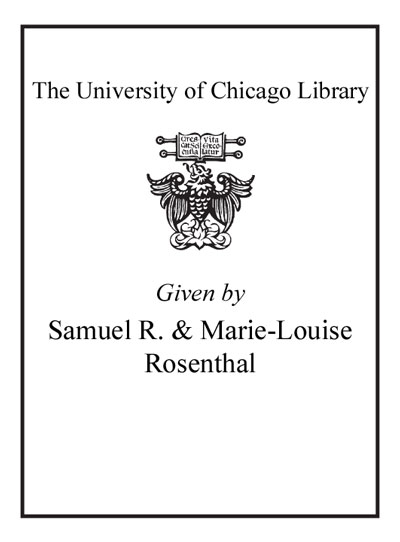Not quite architecture : writing around Alison and Peter Smithson /
Saved in:
| Author / Creator: | Boyer, M. Christine, author. |
|---|---|
| Imprint: | Cambridge, Massachusetts : The MIT Press, [2017] |
| Description: | xiv, 483 pages : illustrations (some color) ; 24 cm |
| Language: | English |
| Subject: | |
| Format: | Print Book |
| URL for this record: | http://pi.lib.uchicago.edu/1001/cat/bib/11017435 |
| Summary: | An exploration of published and unpublished writings of Alison and Peter Smithson, considering them in the context of the debates and discourses of postwar architecture. The English architects Alison Smithson (1928-1993) and Peter Smithson (1923-2003) were ringleaders of the New Brutalism, active in CIAM and Team 10, and influential in English Pop Art. The Smithsons, who met as architecture students, built only a few buildings but wrote prolifically throughout their career, leaving a body of writings that consider issues in architecture and urbanism and also take up subjects that are "not quite architecture" (the name of a series of articles written by Alison Smithson for the Architects' Journal )-including fashion design, graphic communication, and children's tales. In this book, M. Christine Boyer explores the Smithsons' writings-books, articles, lectures, unpublished manuscripts, and private papers. She focuses on unpublished material, reading the letter, the scribbled note, the undelivered lecture, the scrapbook, the "magic box," as words in the language of modern architectural history-especially that of postwar England, where the Smithsons and other architects were at the center of the richest possible range of cultural encounters. Boyer is "writing around" the Smithsons' work by considering the cultural contexts in which they formed and wrote about their ideas.<br> Boyer explains that the Smithsons were intensely concerned with the responsibility of the architect to ensure the quality of place, to build with lyrical appropriateness. They reached back to the country landscapes of their childhood and, Boyer argues, mixed their brand of New Brutalism with the English Picturesque. The Smithsons saw architects as both inheritors and passers-on. Their writings offer juxtapositions and connections, resembling an association of interactive loops, ideas waiting to be transmuted into built form.<br> |
|---|---|
| Physical Description: | xiv, 483 pages : illustrations (some color) ; 24 cm |
| Bibliography: | Includes bibliographical references and index. |
| ISBN: | 9780262035514 0262035510 |

